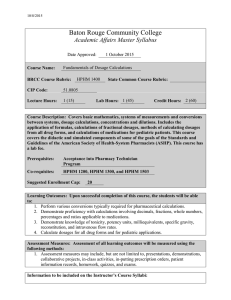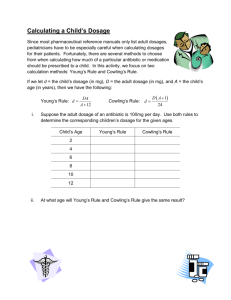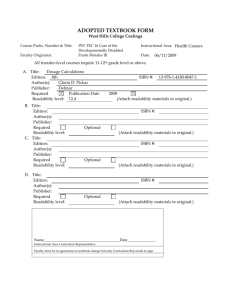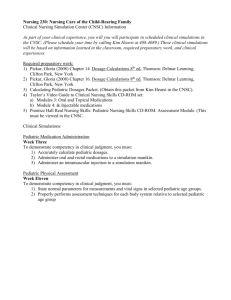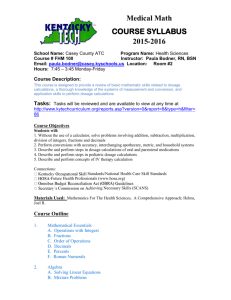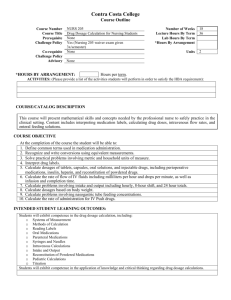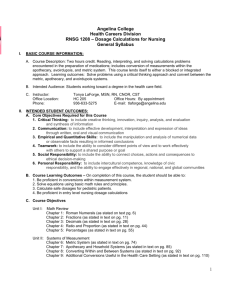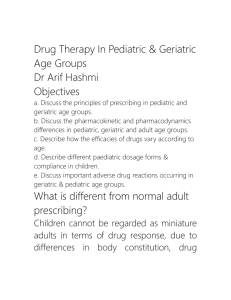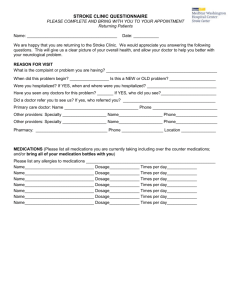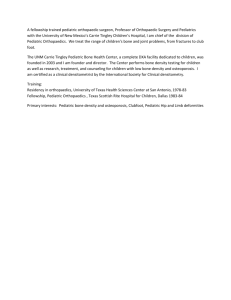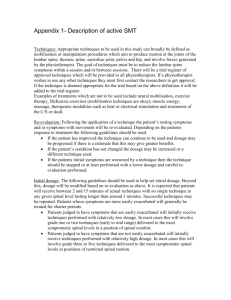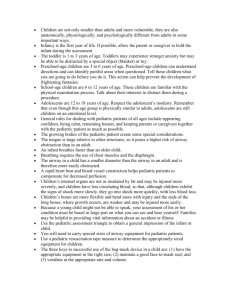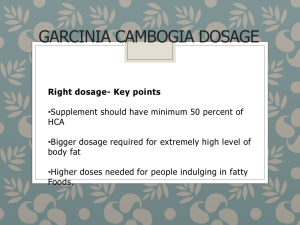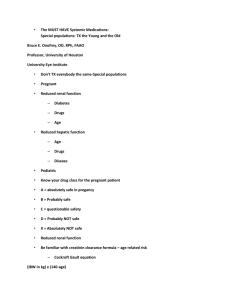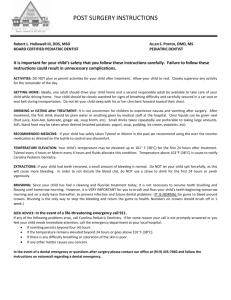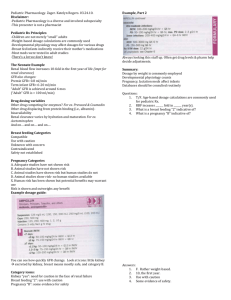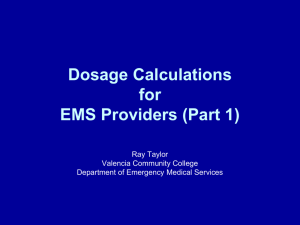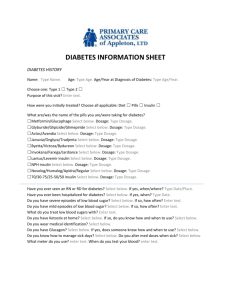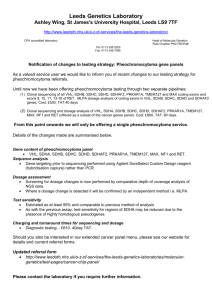Instructions for Pediatric Dosage Calculation
advertisement
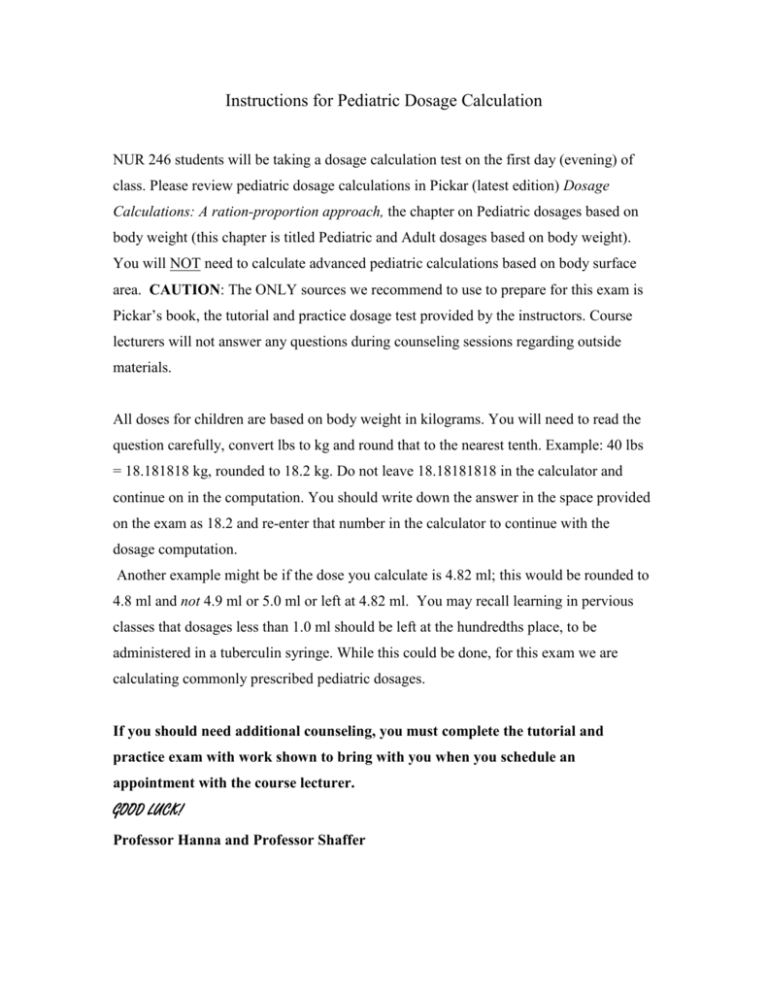
Instructions for Pediatric Dosage Calculation NUR 246 students will be taking a dosage calculation test on the first day (evening) of class. Please review pediatric dosage calculations in Pickar (latest edition) Dosage Calculations: A ration-proportion approach, the chapter on Pediatric dosages based on body weight (this chapter is titled Pediatric and Adult dosages based on body weight). You will NOT need to calculate advanced pediatric calculations based on body surface area. CAUTION: The ONLY sources we recommend to use to prepare for this exam is Pickar’s book, the tutorial and practice dosage test provided by the instructors. Course lecturers will not answer any questions during counseling sessions regarding outside materials. All doses for children are based on body weight in kilograms. You will need to read the question carefully, convert lbs to kg and round that to the nearest tenth. Example: 40 lbs = 18.181818 kg, rounded to 18.2 kg. Do not leave 18.18181818 in the calculator and continue on in the computation. You should write down the answer in the space provided on the exam as 18.2 and re-enter that number in the calculator to continue with the dosage computation. Another example might be if the dose you calculate is 4.82 ml; this would be rounded to 4.8 ml and not 4.9 ml or 5.0 ml or left at 4.82 ml. You may recall learning in pervious classes that dosages less than 1.0 ml should be left at the hundredths place, to be administered in a tuberculin syringe. While this could be done, for this exam we are calculating commonly prescribed pediatric dosages. If you should need additional counseling, you must complete the tutorial and practice exam with work shown to bring with you when you schedule an appointment with the course lecturer. GOOD LUCK! Professor Hanna and Professor Shaffer

